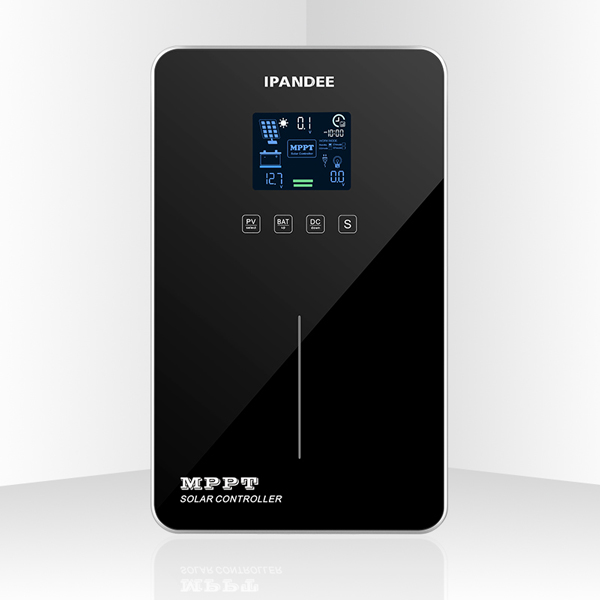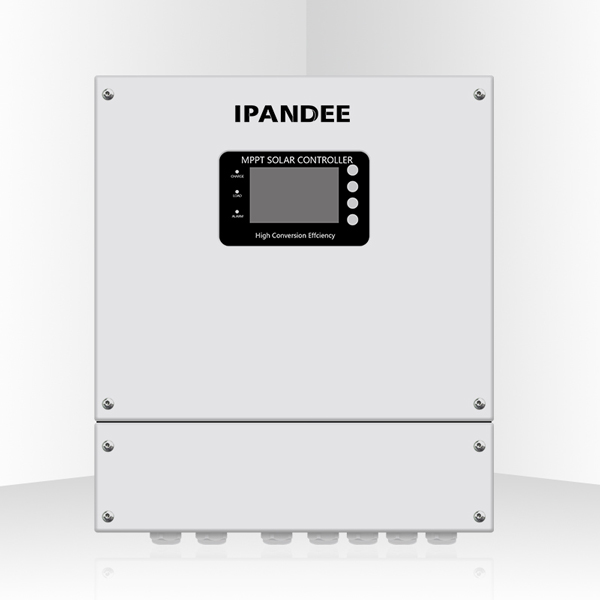The Ipandee hybrid PV Direct Current (DC) Power Supply System is a green energy power supply solution specifically designed for communication operators to save energy, reduce carbon emissions, and improve efficiency. This system uses a DC power architecture, allowing for seamless integration without interrupting the power supply. It can be directly added to existing switch-mode power supply systems without the need to power down and reconfigure the entire base station. This not only reduces the time and cost of renovation but also ensures continuous power supply and stability for the base station. Therefore, it is particularly suitable for the renovation of old base stations. Additionally, it integrates intelligent control and flexible distribution technology, achieving a 20%-30% increase in energy efficiency; promoting the green and low-carbon transformation of communication base station scenarios.
At the same time, through photovoltaic DC direct supply, the DC equipment can achieve more than 5 hours of no municipal power consumption during the day, and can reduce the annual carbon emission of a single station by more than 10 tons, which is deeply in line with the national "double carbon" strategic goals, and provides key technical support for building a new type of digital infrastructure with "minimal energy efficiency and intelligent operation and maintenance".
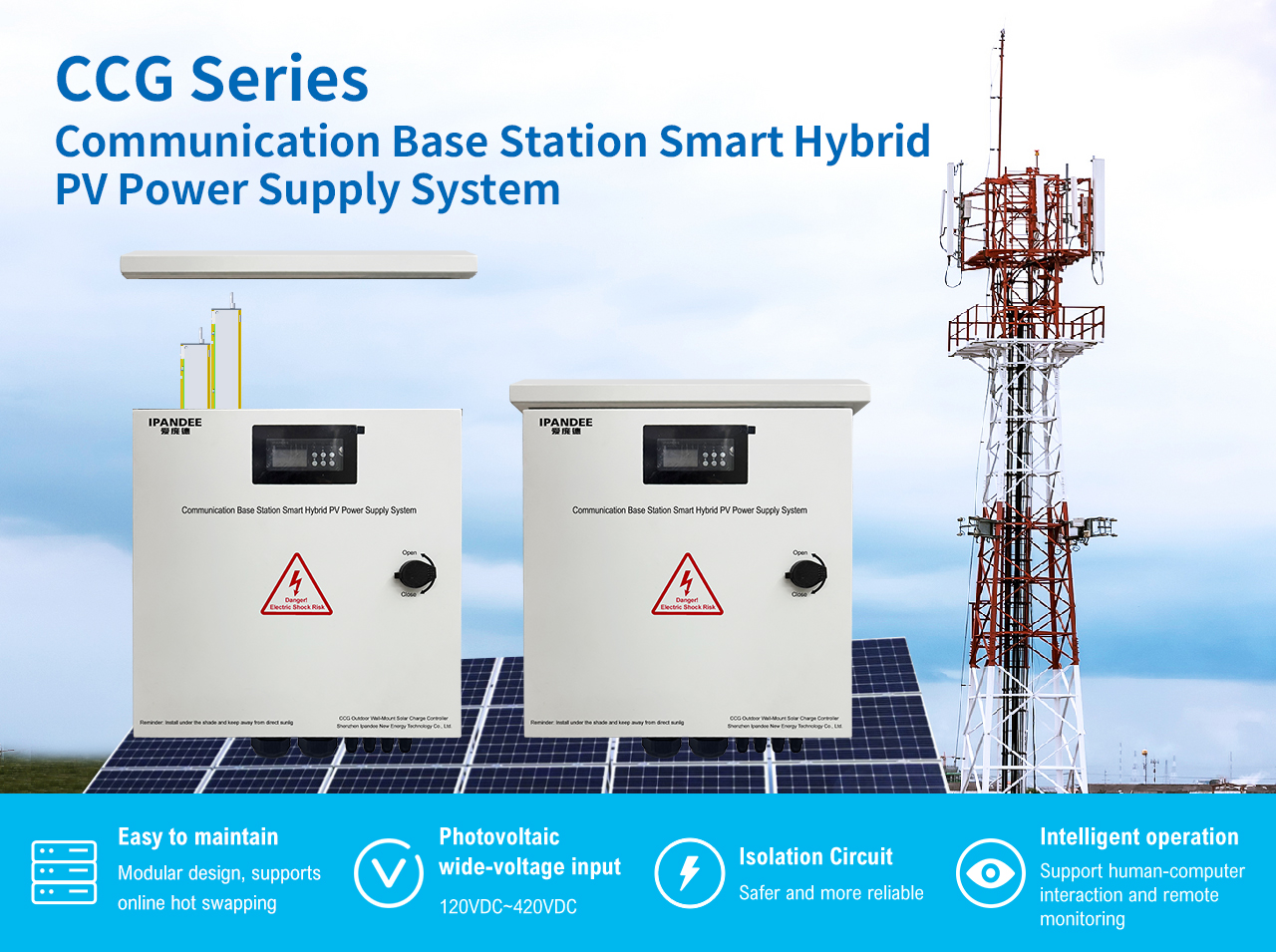

The hybrid PV (DC) power supply system takes solar energy as the core energy, combined with intelligent regulation and complementary technology of municipal power, and consists of the following core components:

Convert solar energy into direct current electricity to power the DC load of the base station;

MPPT charging module: real-time tracking of the maximum power point of solar panels and dynamic optimization of output efficiency
(up to 15-25%).
Input circuit breaker + lightning protection: provide circuit protection and lightning protection function to ensure system safety.
Output insurance: prevent the damage of equipment caused by abnormal working conditions such as overcurrent and short circuit.
DC metering energy meter: real-time monitoring of power generation and load data, support energy consumption analysis.
DTU 4G Module: Integrated remote monitoring function, supports the docking with the base station dynamic environment system,
and realizes unattended operation and maintenance.
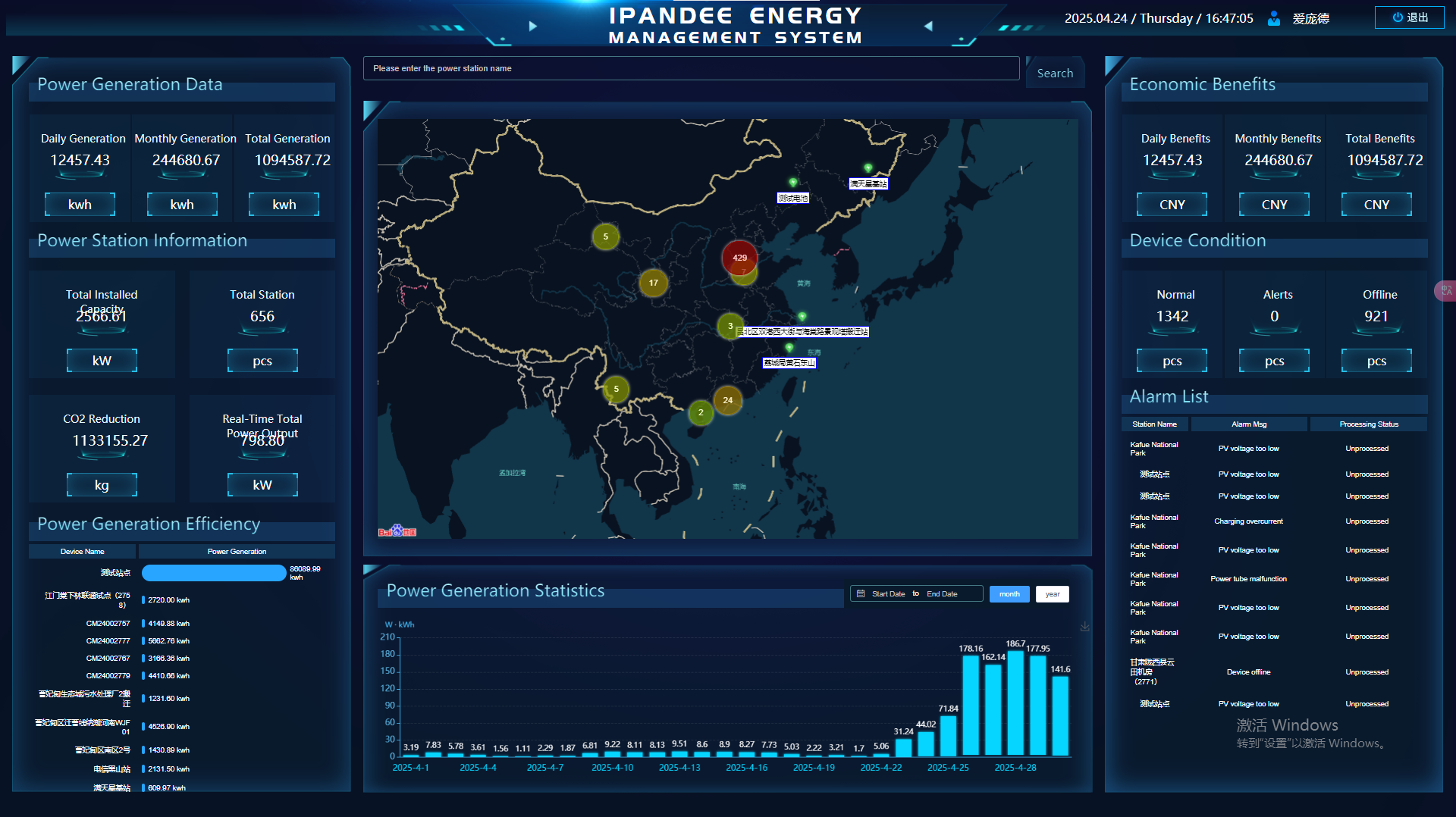
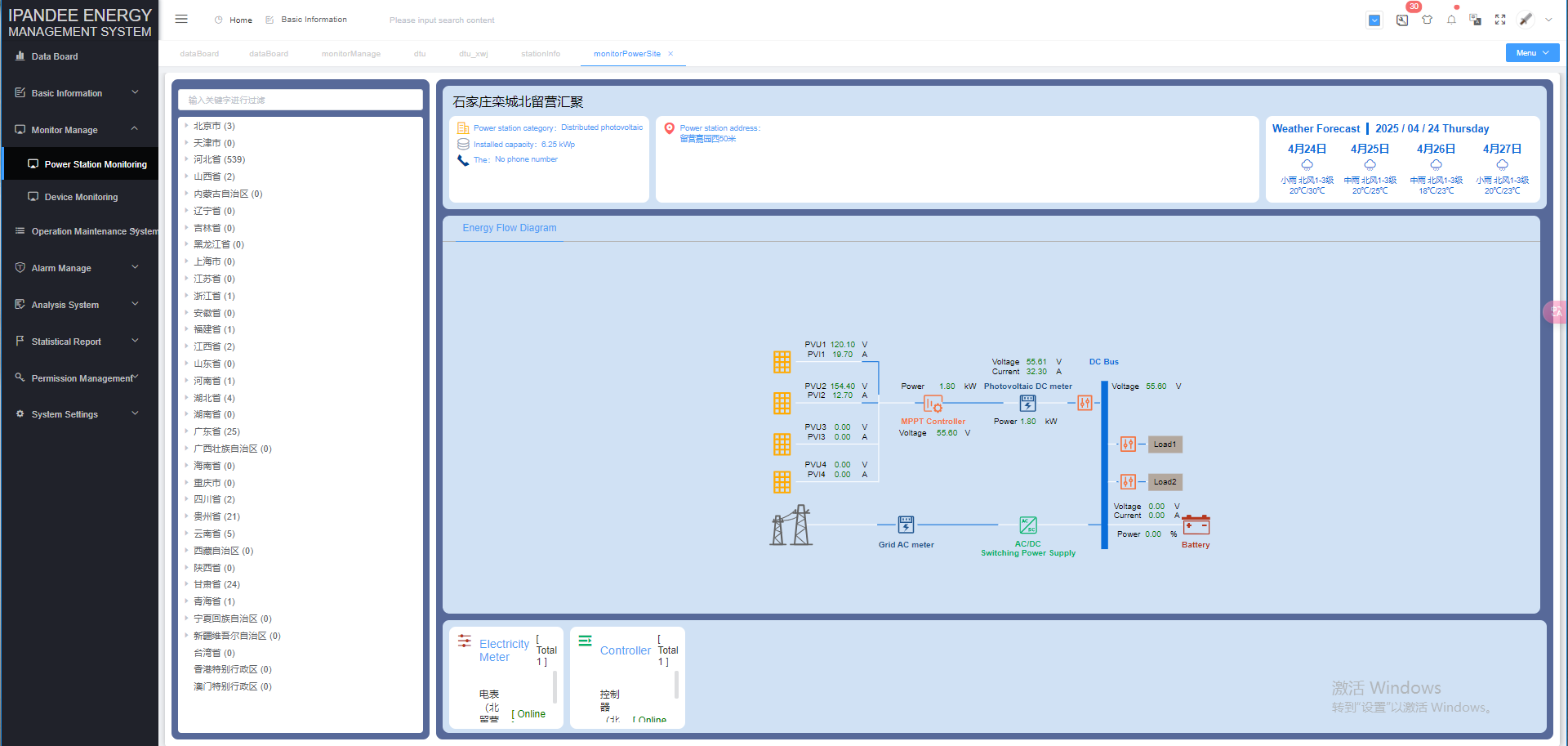

Function: When solar power generation is insufficient, the original power system supplements the power supply to achieve seamless switching.

Photovoltaic installation bracket: made of hot-dip galvanized Q235 steel, wind load resistance is greater than or equal to 0.75kN/m²,
suitable for complex outdoor environment.
Transmission and distribution cable: high temperature resistant, anti-aging design, in line with GB/T 19666 flame retardant standard.

1. Stable and reliable: the power module adopts isolated circuit design scheme;
2. Intelligent collaboration: support turnkey monitoring of PV modules, rectifier modules and DCDC modules;
3. High efficiency: PV modules support MPPT function, conversion efficiency is more than 96%;
4. Wide voltage input for PV parts: the working voltage of photovoltaic input is 120Vdc~420Vdc;
5. Easy to maintain: fully modular design, support hot swap;
6. Remote operation and maintenance: support remote wireless monitoring, intelligent operation and
maintenance platform, always keep track of the operation status;
7. Easy installation: protection class IP55, support wall and pole mounted;
8. Safer: built-in surge protector, circuit breaker, reverse protection, overvoltage protection, etc.
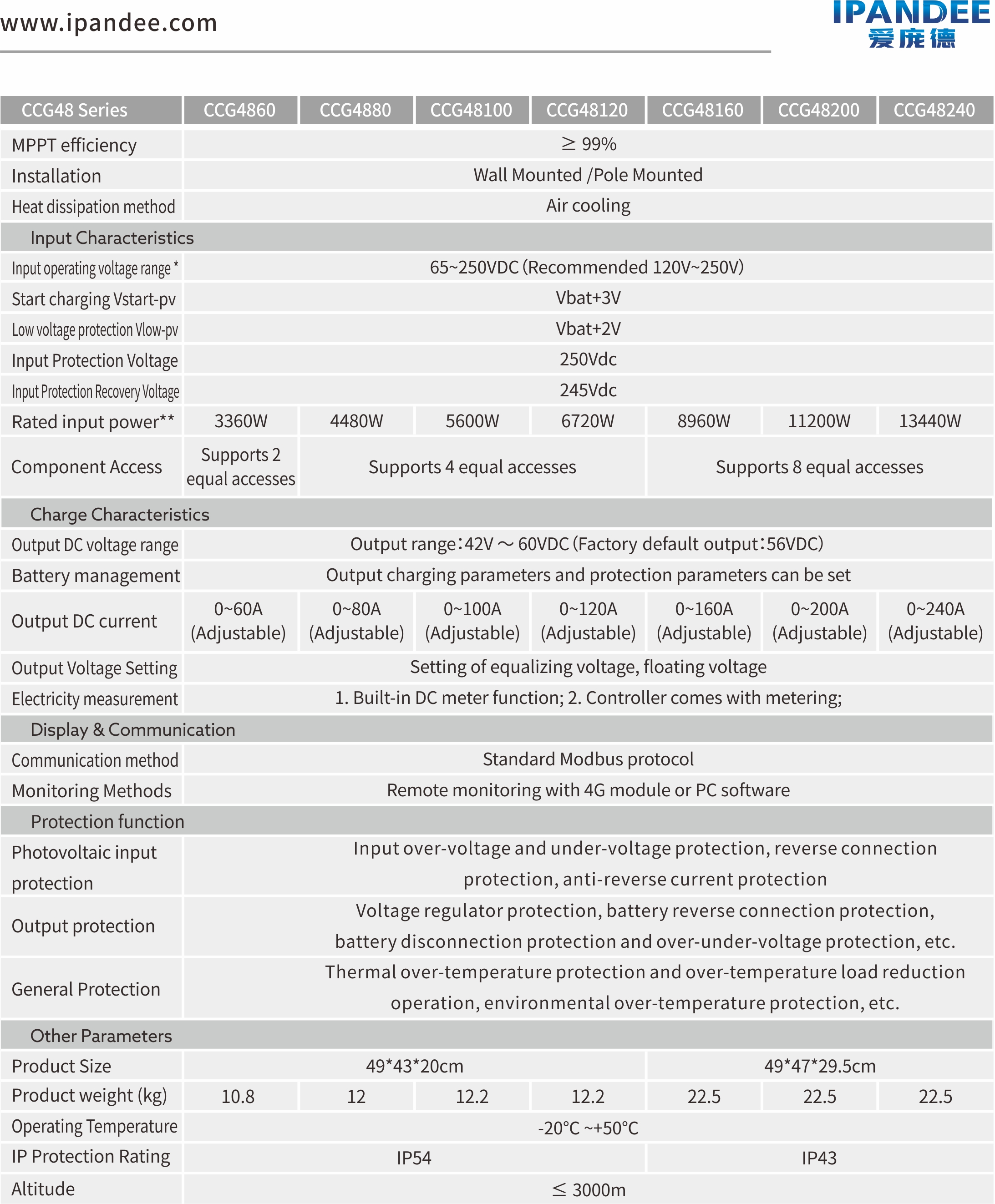

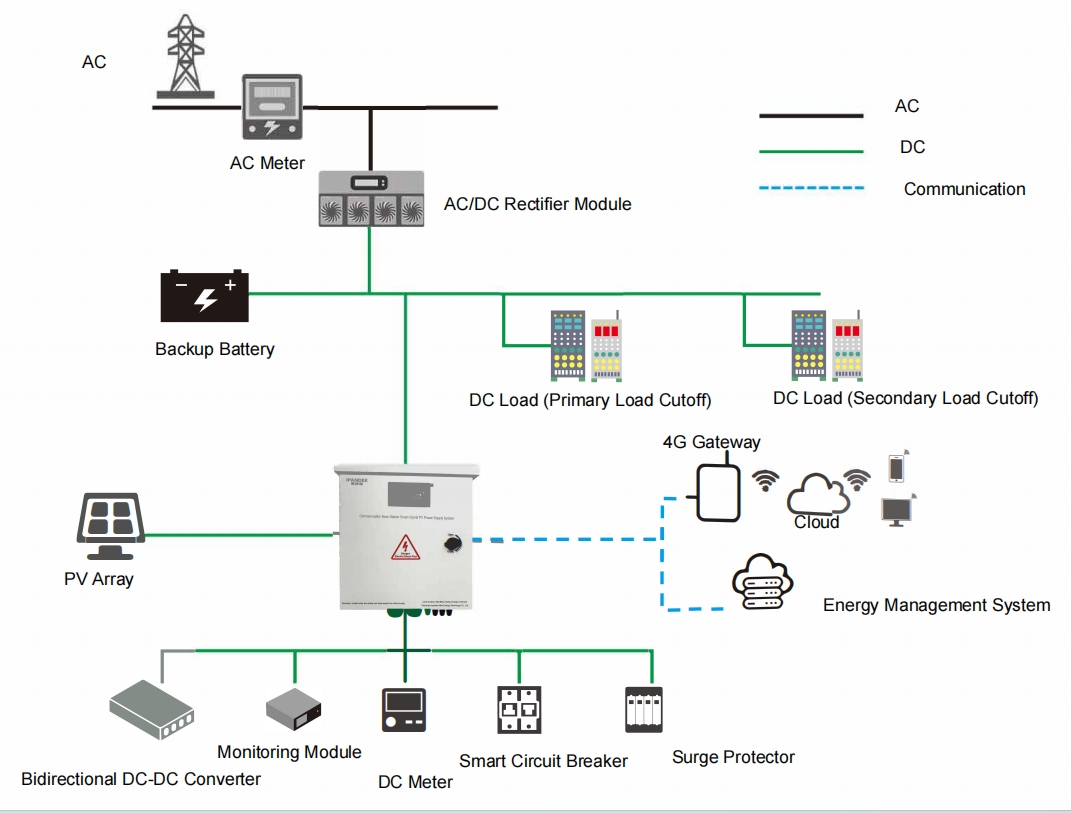
The current generated by the photovoltaic module is stepped down by the hybrid PV controller DC-DC photovoltaic module and connected to
the DC busbar of the switching power supply.The operating voltage range for base station is 40V-60V, with a rated operating voltage of 56V.
Under sufficient sunlight conditions, the hybrid controller DC voltage is increased by 0.5-2.0V compared to the original DC voltage of the base
station's power cabinet (this can be adjusted according to the battery's fully charged voltage), ensuring safe operation of the equipment and
prioritizing the consumption of photovoltaic power;
When the power generation of photovoltaic ≥the DC load power of base station, the DC load of base station is 100% powered by photovoltaic;
When the photovoltaic power generation< the DC load power of the base station, the photovoltaic and the electric power supply the DC load
of the base station at the same time;
When the photovoltaic power generation is 0, the DC load of the base station is 100% powered by electric supply;
At any time, priority will be given to using photovoltaic power generation, supplemented by grid electricity, to maximize the utilization of solar
energy;

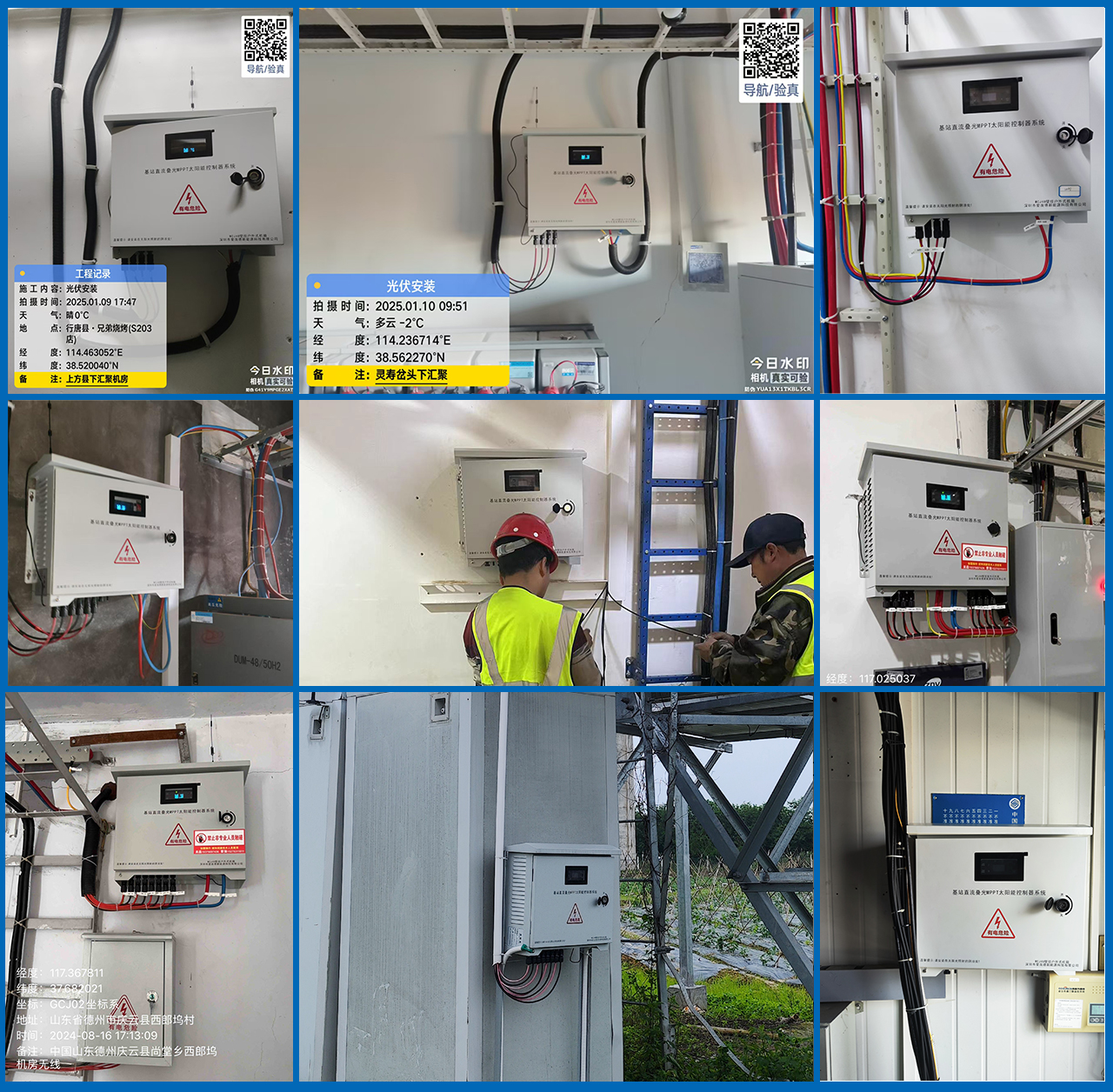
 English
English  한국어
한국어  français
français  Deutsch
Deutsch  Español
Español  italiano
italiano  русский
русский  português
português  العربية
العربية  tiếng việt
tiếng việt  ไทย
ไทย  Polska
Polska  中文
中文



